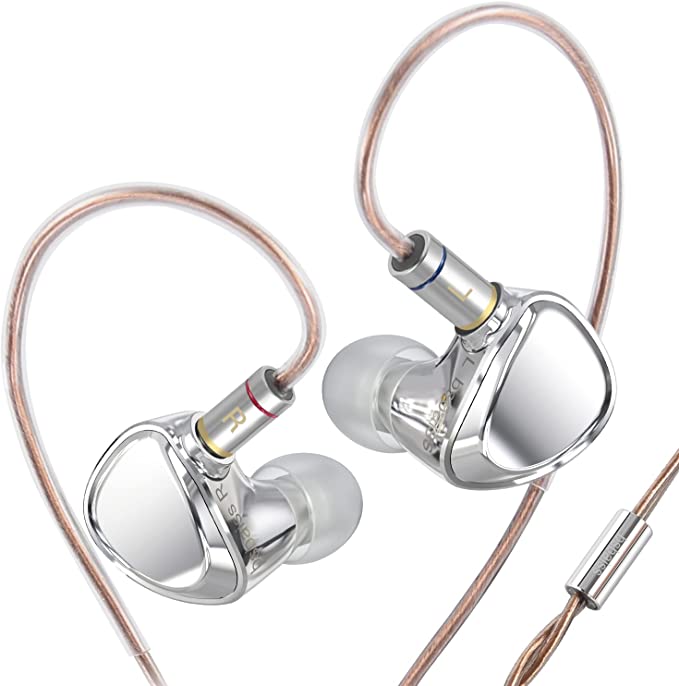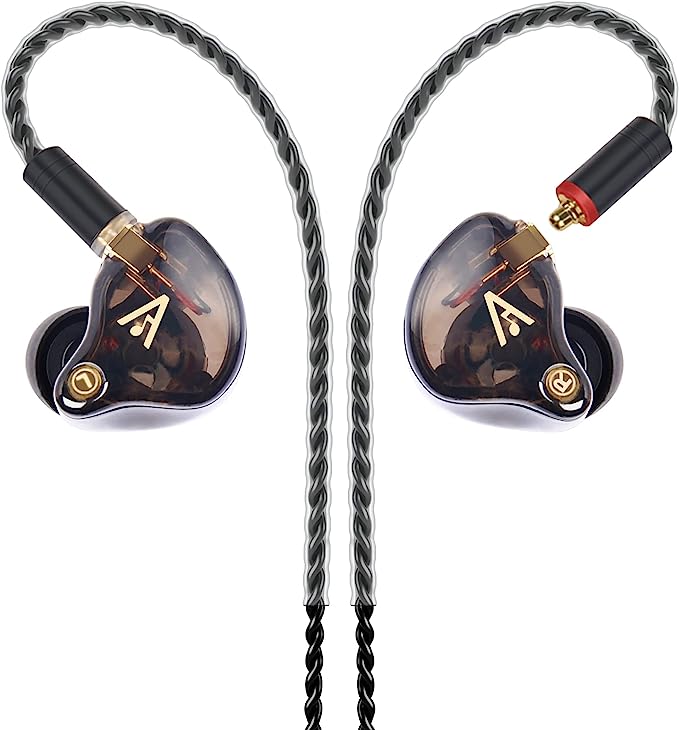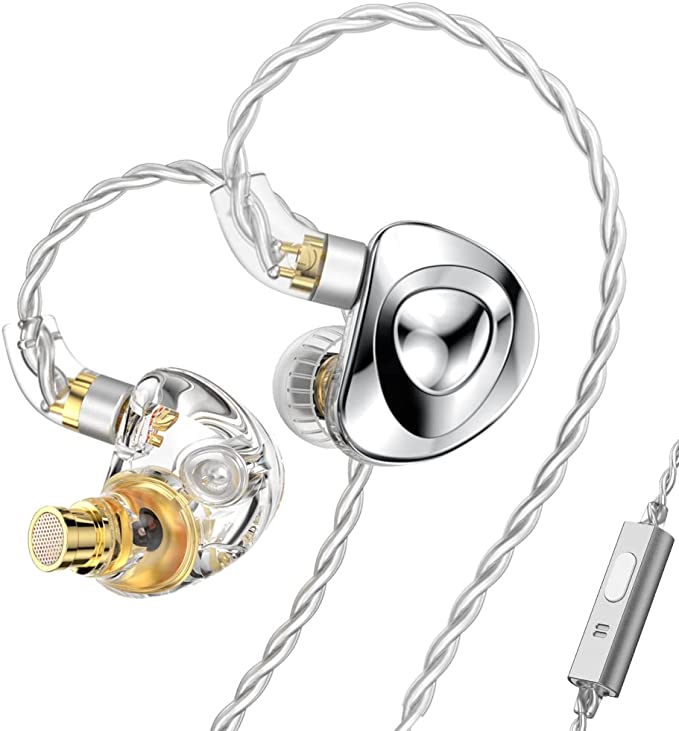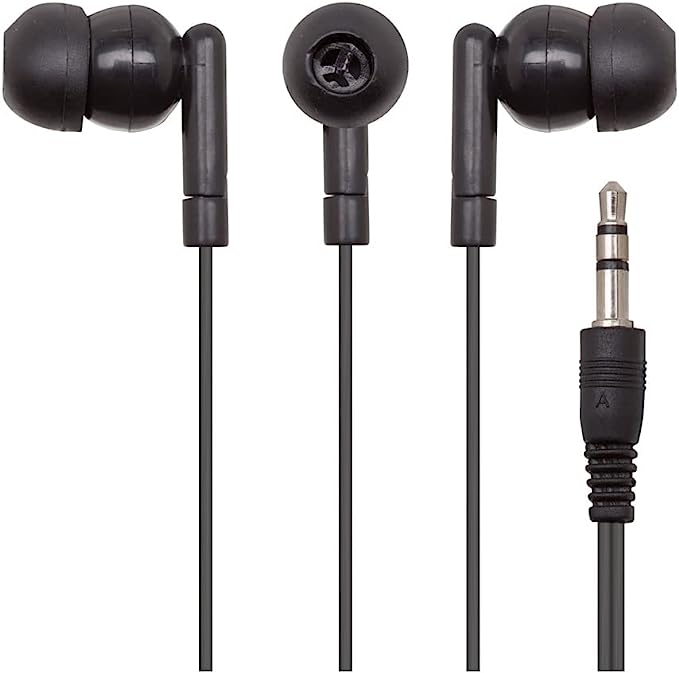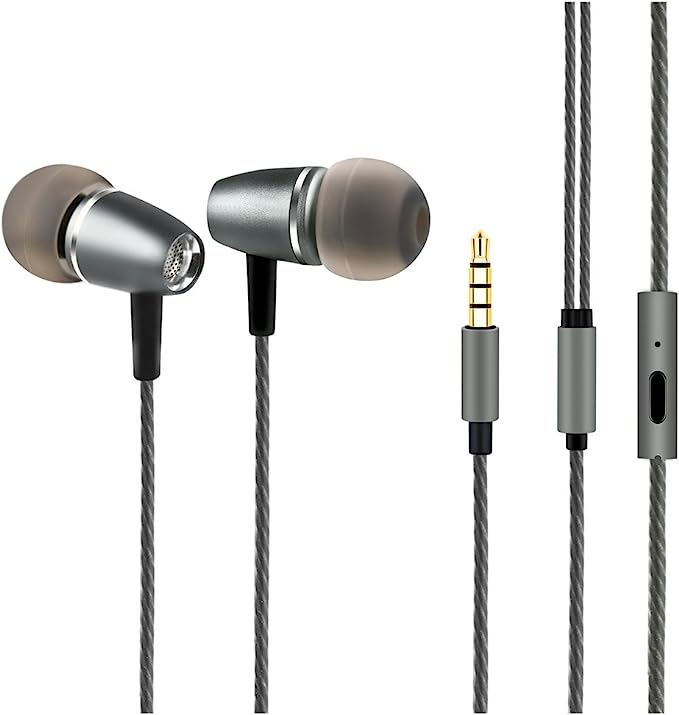Sony IER-Z1R Signature Series In-Ear Headphones: Engineering High-Fidelity Sound
Update on April 25, 2025, 3:52 p.m.
Our ears are marvels. These intricate biological instruments grant us the profound gift of hearing, capable of discerning the faintest whisper, the roar of a crowd, the complex tapestry of an orchestra, and the subtle nuances of a human voice. They decode vibrations traveling through the air, translating them into electrical signals our brain interprets as sound, complete with information about pitch, loudness, location, and timbre. It’s an astonishingly sophisticated process. For audio engineers, the ultimate challenge lies in recreating this rich sonic reality, capturing its essence and delivering it faithfully back to our ears. This quest becomes particularly demanding when the target delivery system is not a large room with carefully placed speakers, but the tiny, intimate space of an in-ear headphone.
Enter devices like the Sony IER-Z1R, part of a “Signature Series” lineage that signals an ambition towards the highest echelons of audio fidelity. Its stated goal is optimization for “High-Resolution Audio reproduction.” But beyond the marketing labels, what does this pursuit actually entail in terms of science and engineering? Let’s peel back the layers and explore the IER-Z1R not merely as a product, but as a fascinating case study in the intricate engineering required to coax breathtaking sound from a miniature form factor. We’ll delve into the scientific principles behind its key design features, using it as a lens to understand the broader challenges and solutions in modern high-fidelity audio.

The Heartbeat: Crafting Sound with a Hybrid Ensemble
The journey of sound reproduction begins with the driver – the miniature engine transforming electrical energy back into the mechanical vibrations we perceive as sound. Music, however, is a demanding master. It spans a vast spectrum of frequencies, from the deep, resonant thrum of a double bass (around 40 Hz) to the airy shimmer of cymbals (reaching well beyond 15,000 Hz). Asking a single, tiny driver mechanism to handle this entire range with equal prowess – delivering both bone-rattling power and delicate detail – pushes the boundaries of physics.
This is where the concept of specialization comes in, much like in a symphony orchestra. You wouldn’t expect a piccolo to produce the sound of a tuba, nor a cello to hit the highest notes of a violin. Each instrument is designed to excel within a specific range. Similarly, audio engineers often employ different types of drivers optimized for different parts of the audio spectrum. The IER-Z1R utilizes what Sony calls an “HD hybrid driver system,” featuring two distinct types: two dynamic drivers and one balanced armature (BA) driver.
Think of Dynamic Drivers as the orchestra’s string basses and cellos. They typically feature a diaphragm (a cone or dome) attached to a voice coil, suspended in a magnetic field. When the audio signal flows through the coil, it moves the diaphragm back and forth, pushing air to create sound waves. Their generally larger size and excursion capability (how far the diaphragm can move) often make them adept at moving significant amounts of air, lending them authority and impact, particularly in the lower frequencies – the bass and lower midrange that provide music’s foundation and warmth.
Balanced Armature Drivers, on the other hand, are more like the violins or flutes – smaller, nimbler, focused on intricate detail. They work differently, using the audio signal to vibrate a tiny reed (the armature) balanced between magnets. This vibration is transferred via a minuscule drive rod to a stiff diaphragm. Because the moving parts are so small and light, BA drivers can often respond incredibly quickly to changes in the audio signal. This agility typically translates into excellent clarity, precision, and detail reproduction, especially in the midrange and higher frequencies where complex harmonics and transient information (the sharp attack of a snare drum, the pluck of a guitar string) reside.
The Hybrid Strategy employed in the IER-Z1R, with its specific 2 Dynamic + 1 BA configuration, aims to harness the strengths of both worlds. The dynamic drivers likely handle the demanding low frequencies, providing depth and power, while the balanced armature focuses on rendering the intricate details and airiness of the mids and highs. The significant engineering challenge here lies in seamlessly blending the outputs of these different driver types. This involves sophisticated crossover networks (electronic filters that direct specific frequency ranges to the appropriate driver) and careful acoustic design to ensure the drivers work together harmoniously, presenting a unified and coherent sound to the listener. The ultimate goal of this ensemble approach is to achieve a wide-bandwidth, detailed, and dynamic reproduction – qualities essential for appreciating the extended frequency range and finer nuances present in High-Resolution Audio recordings.

Sculpting the Soundwave: Mastering Time and Space
Reproducing the correct frequencies at the right loudness is fundamental, but it’s only part of the sonic puzzle. For sound to feel truly realistic and immersive, two other crucial elements come into play: timing (phase coherence) and spatial presentation (soundstage).
Imagine dropping two pebbles into a still pond simultaneously. The ripples spread outwards, and where they meet, they interact – either reinforcing each other (constructive interference) or cancelling each other out (destructive interference). Sound waves behave similarly. Phase Coherence refers to the precise time alignment of different frequencies arriving at the listener’s ear. When multiple drivers produce different parts of the sound spectrum, if those sound waves arrive out of sync (out of phase), they can interfere destructively, potentially smearing details, dulling the impact of transients (making drum hits sound soft instead of sharp), and distorting the stereo image – the perceived location and stability of instruments in the sound field. Achieving good phase coherence is critical for clarity, focus, and creating a believable “picture” of the performance.
The IER-Z1R description mentions a “Refined-phase structure” designed for “extensive sound.” While the provided source material doesn’t specify how Sony achieves this, the goal is clear: to meticulously manage the sound waves generated by the hybrid driver array. Engineers typically tackle this challenge through a combination of precise driver placement within the housing, carefully calculated acoustic pathways (like tiny waveguides), and potentially sophisticated crossover design. The aim is to ensure that sounds across the frequency spectrum, despite originating from different physical points (the various drivers), reach the eardrum in near-perfect temporal alignment. This contributes significantly to perceived clarity and the accurate rendering of instrumental textures and placement.
Beyond timing, there’s the perception of space – the Soundstage. When listening to live music or well-recorded stereo tracks through speakers in a room, our brain uses subtle cues – differences in arrival time and loudness between our ears (Interaural Time Differences, ITD, and Interaural Level Differences, ILD), plus frequency alterations caused by our head and outer ears (Head-Related Transfer Function, HRTF) – to construct a sense of the performance space and the location of instruments within it. Reproducing this convincingly within the confines of an earphone, where the sound source is placed directly in the ear canal, bypassing the outer ear’s natural acoustic filtering, is a major psychoacoustic challenge.
Sony addresses this with “Sound Space Control,” aiming for a “wide sound space.” This suggests intentional acoustic design within the earphone housing itself. Engineers can manipulate the internal volume, shape, venting, and damping materials to subtly influence the sound waves before they reach the eardrum. These manipulations can affect reflections and resonances in ways that mimic some of the spatial cues our brain expects, potentially creating a perception of sound extending beyond the physical confines of the head. It’s an attempt to paint a larger sonic canvas, preventing the “in-head localization” often associated with headphones and striving for a more open, speaker-like presentation. Achieving the intended effect of such acoustic design, however, is critically dependent on a proper fit and seal in the ear canal. The wide array of included eartips (both Hybrid silicone and Triple Comfort foam) underscores this importance – the eartip isn’t just for comfort; it’s a crucial component of the acoustic system, ensuring the carefully sculpted sound waves are delivered effectively to the eardrum.

The Lifeline: Preserving Purity in the Signal
All the sophisticated driver technology and acoustic design in the world are moot if the electrical signal feeding the earphones is compromised. Maintaining signal integrity on its journey from the audio source (player, amplifier) to the drivers’ voice coils is paramount, especially when dealing with the subtle details embedded in High-Resolution Audio.
The IER-Z1R offers two connection options via supplied cables: the ubiquitous conventional 3.5mm stereo jack and a 4.4mm balanced connection. What’s the science behind the “balanced” option? A standard 3.5mm connection uses three wires: one for the left channel signal, one for the right channel signal, and a common ground wire shared by both. In a balanced system, like the 4.4mm pentaconn connector used here, things are different. It typically uses five wires: separate positive (+) and negative (-) signal wires for the left channel, separate positive (+) and negative (-) signal wires for the right channel, and a dedicated ground.
The key advantage lies in how it handles noise. The audio signal is sent down both the positive and negative wires for each channel, but crucially, the signal on the negative wire is an inverted (phase-flipped) copy of the positive signal. Any external electromagnetic interference (noise) picked up along the cable path tends to affect both the positive and negative wires equally (this is called common-mode noise). At the receiving end (inside a compatible balanced amplifier or player), a differential amplifier subtracts the negative signal from the positive signal. Since the audio signals were inverted relative to each other, subtracting them effectively doubles the audio signal’s strength. However, since the noise was the same on both wires, subtracting one from the other cancels out the common-mode noise. Think of it like two parallel highways carrying the same traffic (audio) but in opposite directions, while encountering the same weather (noise); by comparing the difference at the destination, you can isolate the traffic and filter out the weather. This principle of common-mode noise rejection can lead to a cleaner, quieter signal path with potentially better separation between the left and right channels, allowing finer details in the music to emerge, which is particularly beneficial for high-resolution listening.
Beyond the connection type, the mention of a “Quality cable for preserving signal purity” highlights that the physical cable itself is part of the electrical circuit. Factors like the conductivity of the wire material (often high-purity copper or silver-coated copper), the quality of the insulation (dielectric properties), and the effectiveness of shielding against external interference can, particularly with highly sensitive in-ear monitors, subtly influence the final signal that reaches the drivers. While the audible impact can be debated, the engineering intention is to minimize any potential degradation along this final, critical pathway.

The Art of Precision: Where Engineering Meets Craft
Creating sophisticated miniature acoustic systems like the IER-Z1R demands extraordinary precision. Tiny variations in driver manufacturing, internal chamber dimensions, or acoustic damping placement – perhaps measured in microns – can lead to audible differences in frequency response, phase characteristics, and channel balance between the left and right earpieces. Achieving consistency and realizing the intended acoustic design relies heavily on meticulous manufacturing processes and stringent quality control.
The detail that the IER-Z1R is “Crafted in Japan” can be seen not just as a geographical indicator, but potentially as a marker for this commitment to precision manufacturing – a cultural and industrial emphasis often associated with high-technology and high-performance audio equipment.
Furthermore, while the main product description doesn’t specify the housing material, one of the user reviews included in the source material mentions Zirconium alloy. From a general material science perspective, the choice of housing material can play a role in acoustic performance. Materials with high density and rigidity, coupled with good damping properties (the ability to suppress unwanted vibrations), can help minimize resonances within the housing itself. Such resonances could otherwise color the sound or obscure fine details. Using specialized alloys might be part of the strategy to create a stable, inert platform for the drivers to operate optimally, although without explicit confirmation from Sony’s technical documentation, this remains an informed inference based on general principles.

Beyond the Blueprint: Science in Service of Sensation
Looking at the Sony IER-Z1R through an engineering lens reveals a systemic approach to the complex challenge of high-fidelity in-ear audio. It’s a confluence of specialized components and design philosophies: the hybrid driver array aiming for full-spectrum coverage, the acoustic structures seeking to manage phase and sculpt the soundstage, the balanced signal path striving for purity, and the precision manufacturing required to bring it all together consistently.
Each element represents the application of scientific principles – physics, acoustics, electronics, material science – towards a perceptual goal. Yet, the journey from blueprint to breathtaking sound involves more than just equations and measurements. There’s an undeniable element of art in the final “tuning” – the subtle adjustments made by experienced engineers, guided by countless hours of critical listening, to achieve a specific sonic signature that balances technical accuracy with musicality and emotional engagement.
Ultimately, while we can dissect the science and appreciate the engineering ingenuity, the success of any audio device resides in the listener’s experience. Does it connect us more deeply to the music? Does it unveil new layers in familiar recordings? Does it evoke the intended emotion? The Sony IER-Z1R, with its intricate design, stands as a testament to the enduring human fascination with capturing, recreating, and immersing ourselves in the world of sound – a pursuit where rigorous science continually strives to serve our senses and emotions.







